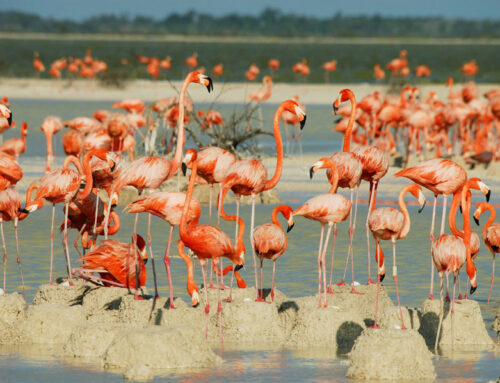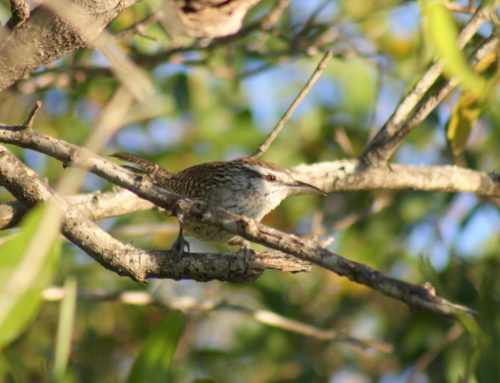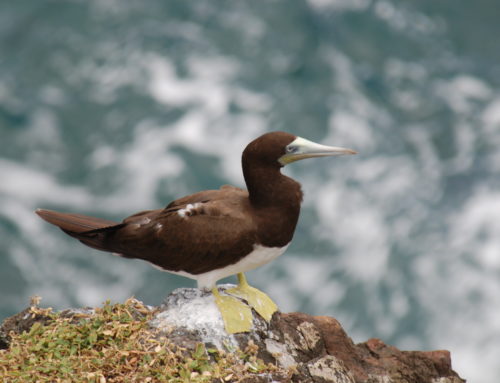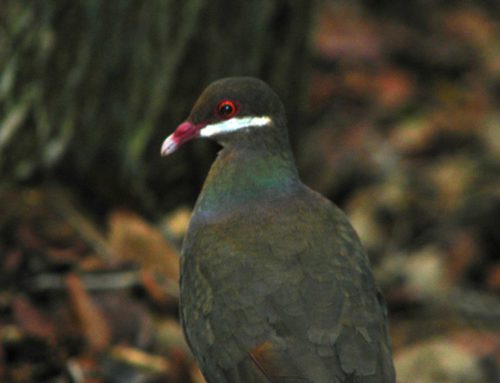Hay una franja rosada en el horizonte…
y no es la puesta del sol!
RESUMEN
Una de las especies de aves más carismáticas y distintivas del Caribe es, indudablemente, el Flamenco Rosado (Phoenicopterus ruber). Con una silue- ta inconfundible, esta esbelta especie, de comportamientos gregarios, cons- tituye uno de los símbolos de la conservación de los humedales costeros. El nombre científico de esta especie proviene de las raíces griegas "phoinix" (carmesí), "pterus" (alas) y “ruber” (rojo).
Los flamencos son aves zancudas grandes, de entre 80 cm y 1,40 m de largo, con cuellos largos (machos 2,8 kg, hembras 2,2 kg). El pico es muy caracterís- tico, y perfectamente adaptado para hurgar en el barro, con una pronuncia- da curvatura hacia abajo y dotado de laminillas internas (lamelas) para rete- ner las sustancias alimenticias al filtrar el limo. Los flamencos se alimentan, mediante filtración, de crustáceos y algas. La filtración de esta comida se
apoya en la estructura del pico y en la lengua áspera y grande. También se puede alimentar reco- giendo presas más gran- des con el pico (pero es poco frecuente). Las patas tienen cuatro dedos, los tres delan- teros unidos por una membrana y el poste-
rior muy pequeño.
ABSTRACT
One of the most charismatic and distinctive bird species in the Caribbean is undoubtedly the Pink Flamingo (Phoenicopterus ruber). With an unmistakable silhouette, this slender species, with gregarious behavior, is one of the symbols of the conservation of coastal wetlands. The scientific name of this species comes from the Greek roots "phoinix" (crimson), "pterus" (wings) and "ruber" (red).
Flamingos are large wading birds, between 80 cm and 1.40 m long, with long necks (2.8 kg males, 2.2 kg females). The beak is very characteristic, and perfectly adapted for digging in mud, with a pronounced downward curvature and equipped with internal lamellae (lamellae) to retain food substances when filtering the silt. Flamingos feed, through filtration, on crustaceans and algae. The filtration of this food is
It supports the structure of the beak and the rough and large tongue. It can also feed by picking up larger prey with its beak (but this is rare). The legs have four toes, the front three joined by a membrane and the back
very small rior.
Puedes leer el artículo completo haciendo clic en el botón






